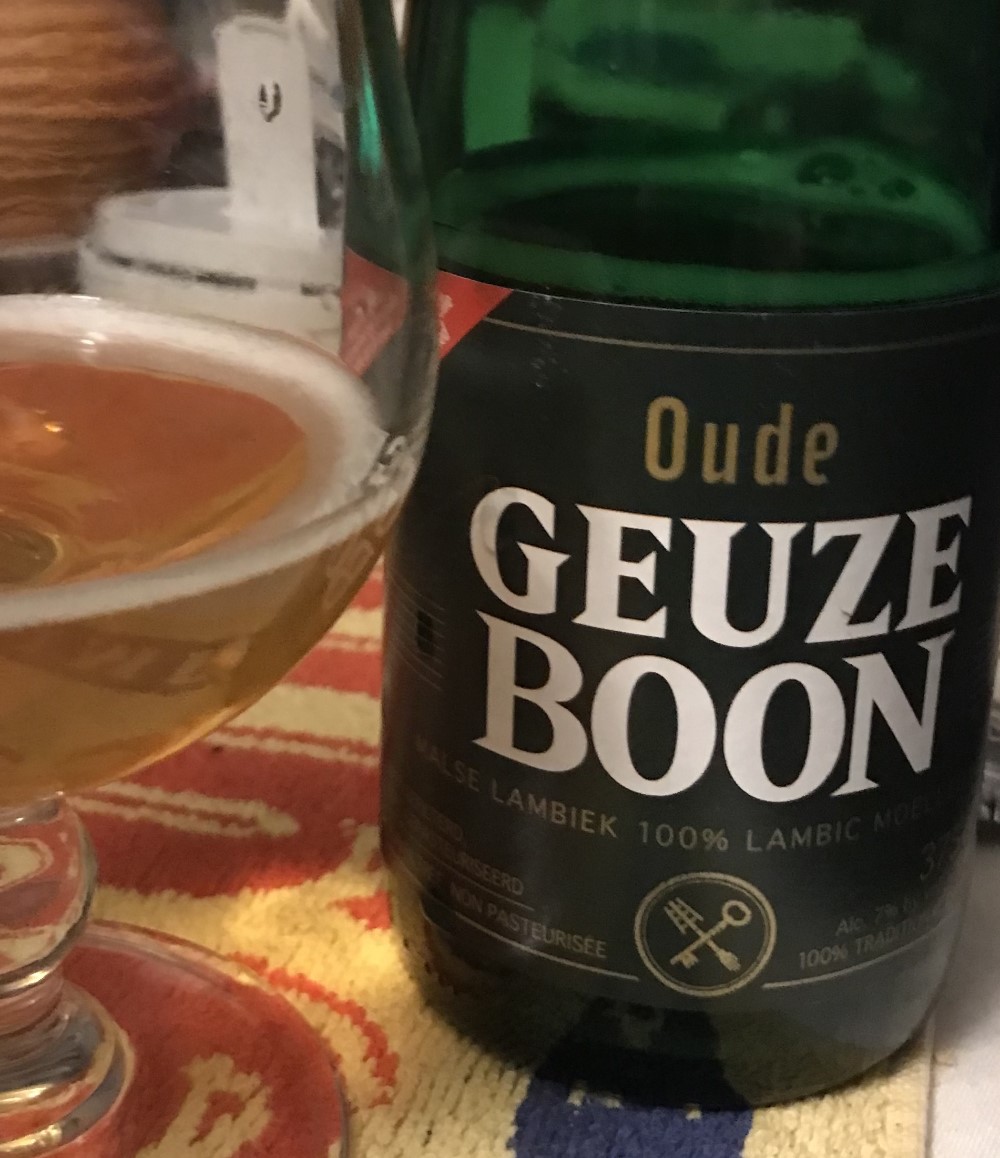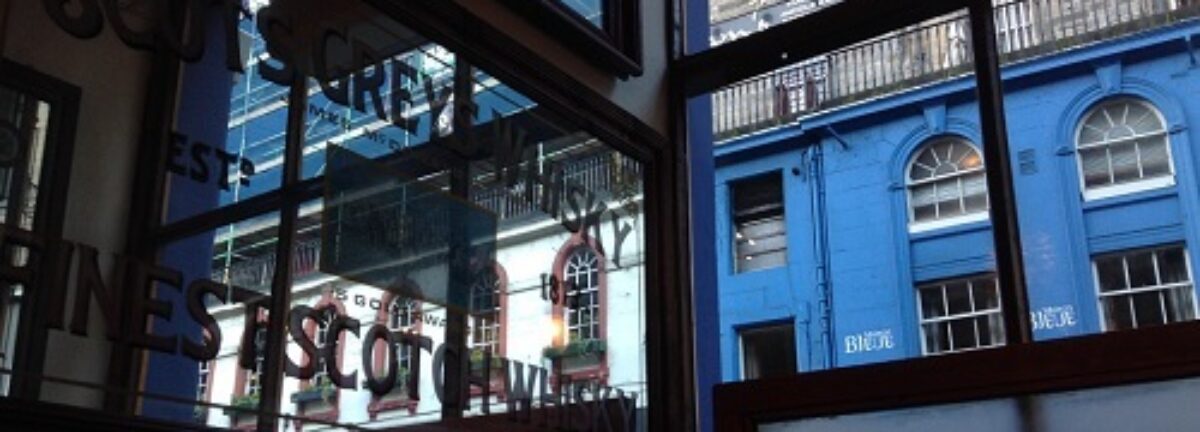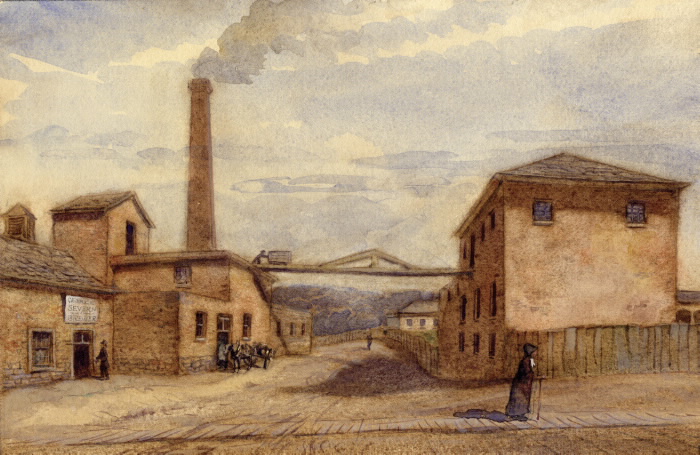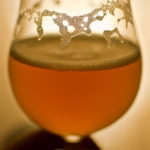 I’ve been mentioning that beer writing seems to have gone a bit quiet this autumn and – horrors – it’s gotten into such a state of the doldrums that Stan’s booked off until the first Monday in December. Lordy. What to do, what to do? Scour the globe? Look near and far. That’s what we always do. When we are not sifting clues we scour the globe. Beer helps. Had this one on Saturday, bought in Quebec as a standard shelf item with a reasonable price tag. Not sure why we can’t have the nice things they get at the SAQ…
I’ve been mentioning that beer writing seems to have gone a bit quiet this autumn and – horrors – it’s gotten into such a state of the doldrums that Stan’s booked off until the first Monday in December. Lordy. What to do, what to do? Scour the globe? Look near and far. That’s what we always do. When we are not sifting clues we scour the globe. Beer helps. Had this one on Saturday, bought in Quebec as a standard shelf item with a reasonable price tag. Not sure why we can’t have the nice things they get at the SAQ…
UPDATE: Lew posted a new podcast. Normally I would not encourage podcasting… because… you know… but look at all of what he’s done on one short trip!
Hanover may have thought it was a frontier town, a market town, a transportation hub. But the peckish German-Americans who populated it in the late 1800s and early 1900s knew better. Their ovens and kettles, and a vague hunger between meals, were destined to make Hanover known as Snack Town! My friend Dave Dreese and I hit town on our way to Baltimore, and wow. We visited two of the biggest snack food companies in America, two very old school hot dog joints, and a great butcher shop with their own smoked sausage and cheese. And of course, all those snacky eats need beer, so we hit the town’s six breweries. I interviewed the man who makes the last hand-rolled pretzels in Snack Town, Kevin Bidelspach of Revonah Pretzels.
Two hot dog joints… “two very old school hot dog joints”… Lordy…
Resuming normal service: I am starting off this week with a news item from Jessica Mason published at The Drinks Business at the end of last week. I like this because it acknowledges that values can clash in the world of craft – and not the ones you might think at first:
… even though the regulations and consumer pressures have led to sustainability fast-becoming a “licence to operate”, rather than a “nice-to-have” novelty, beer trends for variety were contrary to the guidance… Stronger consumer appetite for variety over volume has undoubtedly created commercial opportunities for breweries, but producing up to 100 different varieties of beer in a large-scale plant means that short production runs will require more energy and water.
I like that – push back on all thing to all paradigms. The bulk of beer brands are not only fleeting but gotten a bit lazy. Add a sauce or swap the hop so you can change the label. Even the best brewers who attempt to make all things for all people are putting out too many clangers. Focus.
Factoid: One beer in Iceland costs the same as nine beers in Hungary.
In science news, a yeast strain has also pushed back… or perhaps been pushed back by the lab coat wearers at the University of Wisconsin:
A key trait of yeasts used in beer production is the ability to break down maltose, the most abundant sugar in the material used to brew beer. The team chose a yeast strain that had evolutionarily lost this ability despite possessing many of the genes required for maltose metabolism. After running evolution experiments growing the yeast on maltose and selecting decedents that thrived, the lab’s S. eubayanus yeast reacquired the ability to eat maltose.
Hmm… I know that these things are important but wouldn’t starting with the strain that could do the thing you wanted it to do in the first place have been a faster way to get to your goal? Are they just jerking the poor things around?!?! [ED.: …Just a minute… let me check my high school science grades again… hmm… yes, you’re right. I don’t have a clue.] Perhaps similarly in terms of getting somewhere, Mudgie pitched something that, to be honest, I had never considered, probably because it has not yet come from the oracle Elon’s mouth:
…surely one of the main potential benefits of driverless cars is that they will extend mobility to people who are unable to drive themselves either through old age or medical conditions. It is also impossible to have driverless taxis – often suggested as one of the main applications – if there always needs to be a competent driver on board… If an automated taxi can travel without a driver to its pick-up point, then surely it can carry a passenger who is incapable of driving, whether through age, infirmity or intoxication. And if a taxi can do it, why not your own driverless car?
I’m not sure I want to live in that world… but if you give it a quarter century that’s not likely going to be an issue. Question: who cleans up the vom? Conversely, certainly in quesions of personal control, my favourite character is all of beer writing is Delores, Ron’s wife, and this week we learned a bit more about her and her ways when travelling:
Luckily I have Dolores with me. Who, from years of travelling on overcrowded Deutsche Reichsbahn, is an expert in elbowing her way to grab seats. It’s not too difficult as the train isn’t totally packed… “Andrew would have loved it here as a kid. We could have just left him looking out of the window all day.” Dolores isn’t wrong. I’m tempted to do that myself…. Weighed down both by shopping and the kilo of pork in my belly. I sip on whiskey while Dolores flicks through the German channels. We only get five on the Amsterdam cable.
The next day, we read “Dolores has the morning all planned out” which is great news given I have been out and about with Ron and know what the possibilities really are and what needs to be done about it. I was not at all reminded of Ron when I saw this interesting comment on the reasons behind all the Bud Lite $105 million-a-year sponsorship deal with the UFC:
He said: ‘It’s like this whole Bud Light deal. People are talking s*** now. “Sell out” and all this s*** they f***ing say. Believe me, I’m the furthest f***ing thing from a sell out…’I look deeper than just f***ing “oh you know, they did this can with whoever”. I don’t give a s***. You guys think you’re all looking for an apology, they ain’t going to f***ing apologise to you.
My. A couple of bits of experimental hop news came out this week. Stan (because he was not totally slacking) issued another edition of Hop Queries including a few invitations to help with leading edge research like this:
Do not feel left out. The Hop Research Council currently has more than 2,500 pounds each of three varieties that have advanced to elite status available for brewers to use. They expect feedback. That will help determine which ones, if any, get named and become available to farmers. The hops cost $9.25 a pound in 11-pound and 44-pound packages and $10 a pound in one-pound packages. Each has two names: HRC-002 (2000010-008), HRC-003 (W1108-333) and HRC-004 (201008-008). HRC-003 has been top rated in early brewing trials, with intense ripe peach, mango and other tropical aromas.
Here is the form to send in your request to participate in this program. The other hops story appeared in Pellicle where Adam Pierce wrote about a hop called Strangs #7:
The taste of Strang’s #7 is like no other British hop I have experienced before. It has a kaleidoscope of flavours from pithy orange marmalade, tangerine, a touch herbal; dill, lemongrass, a hint of pear drops, sweet bubblegum and finally the “controversial” coconut note, similar to the one found in the Japanese Sorachi Ace and North American American Sabro varieties.
Note: the role of beer league hockey’s most important team member explained.
And the latest edition of London Beer City was released by Will Hawkes last Friday and includes a short study of Eko Brewery at Unit 2A-2, Copeland Park, Peckham:
Eko bucks the trend by drawing on African drinking culture and brewing techniques and recipes, plus ingredients such as palm sugar, cassava, yam and hops grown in South Africa. “The main focus is to incorporate African ingredients in the beer,” says Anthony, “but the first beer we made [in 2018] didn’t have any African ingredients – but it was low bitterness, low carbonation, to ensure it went well with food, which is the way beer is enjoyed in Africa.” Anthony grew up in Peckham and his family comes from Nigeria (Eko is the Yoruba name for Lagos), while Helena’s are from Congo. That’s had a big impact on her approach to beer. “In Congo, women drink a lot of beer,” she says. “My mum, my aunties drank beer when I was growing up. A lot of the women in my family drank beer more than the men.”
I love auntie culture. I had aunties. And aunts too. Two separate categories.
Speaking of assigning categories, a court ruling about beer from Canada’s top court was published in the Ontario Gazette this week, months after its actual release by the Supremes. Facts are always fascinating:
A constable of the Ontario Provincial Police (“OPP”) formed the intention on a highway to randomly stop the respondent to ascertain his sobriety, and followed him onto a private driveway to do so. Once the constable approached the respondent, he observed obvious signs of intoxication and the respondent indicated that he might have had 10 beers. Two subsequent breathalyzer tests revealed that the respondent’s blood alcohol concentration was above the legal limit.
Why did this get to the highest court in the land? The random stop… tsk-tsk… nope… naughty naughty:
…the police officers did not have statutory authority under s. 48(1) of the HTA to follow the respondent onto the private driveway to conduct the random sobriety stop. Accordingly, the police officers breached the respondent’s rights under s. 9 of the Canadian Charter of Rights and Freedoms…
Also here in Ontario, @starbeer of the Toronto Star is speculating and rumour mongering again (based largely on things like “investigative journalism” and “fact gathering”!!!). As we’ve been monitoring for the best part of the decade, we the agreement governing our semi-monopolistic big brewery owned sales outlet is coming up and it appears that the government is not going to renew the deal with the imaginatively named The Beer Store (TBS). This effectively places all beer retailing policies on the table. I don’t have the text of the Star article (as it’s behind a pay wall and I save my pennies for other things like cheese) but BlogTO is providing a helpful summary of the issues including:
The agreement as it stands now expires in 2025, and this year is the cutoff for when the government must notify affected parties if it is not being renewed. And experts are noting that the Beer Store has been downsizing and selling off multiple properties in recent years, cutting four per cent of its footprint… While talk of the vendor potentially closing is nothing more than a rumour at this point, many citizens appear to feel strongly about the subject, with the vast majority celebrating the end of what they see as one of many problematic monopolies or oligopolies in the province. Then there are the thousands of jobs that will be lost if the Beer Store goes under, and the fears that beer prices could actually end up going up.
Concidentally… as most things I report in a week are… big brewer Labatt is expanding its London Ontario plant with a 27 million investment:
The new machines will see beer packaged using paperboard — which is one layer of paper compared to recycled cardboard which is three layers of heavy paper. It will also use less glue than older machines… “It allows us to get our products to market for consumers in the most sustainable way possible…” the new tanks will also expand the capability to ferment beer by over 59 million litres — the equivalent of 24 Olympic sized swimming pools… “Our London brewery is the largest in Labatt’s network, brewing over 40 per cent of the beer we brew for Canadians, and this significant investment boosts the facility’s production capacity and sustainability performance…”
Someone is optimistic. And look – there it is again: sustainablility. Greenwashing? Cost cutting? Or real? Going back to the question of the TBS agreement, who will take on the bottle recycling the TBS does now if a deal doesn’t continue? Who knows. But the province is moving to a general scheme of producer paid recycling generally so maybe that’s at play. Another question: can price rises be stopped in at least one respect? See, the currents scheme has for almost a century levelled prices throughout the province. Meaning a beer bottled next to one TBS retail outlet costs the same as when sold that beer is sold at a remote TBS outlet. Effectively, southerners and urban folk subsidize transportation costs for more remote Ontarians. The roads are still poor and beer is heavy. Back in 2012, the CBC reported that as an odd consequence booze is relatively far cheaper in northern Ontario.
 Relatedly, Victim of Maths has shown a similar phenomenon affecting “Today’s Britain Today”*:
Relatedly, Victim of Maths has shown a similar phenomenon affecting “Today’s Britain Today”*:
Arguments about the affordability of alcohol during the cost-of-living crisis also don’t seem to hold much water. The fact that alcohol prices rose at lower than inflation levels means that even a stagnation in disposable incomes didn’t stop alcohol becoming *more* affordable.
As per usual, he provided a handy graph which I have included for your clicky pleasure. Note how beer in the UK becomes notably even more affordable compeared to wine and the hard stuff right around in the mid-2000s and becomes slowly more and more so. And concurrently climate change may be playing a role too – at least in terms of pure alcohol levels according to Jancis:
As the planet warms up and dries out, it is going to be increasingly difficult to make wines below 14% anyway. I recently attended a tasting of 32 red bordeaux from vintages 2011 to 2019 from the stocks of Justerini & Brooks, a traditional wine merchant not known for favouring flashy wines. Seven of these clarets had 14.5% on the label and two 15%. This would have been unimaginable in the last century.
And finally, just as the previous discussion was triggered by thoughts on the meaning of “full-bodied” in today’s market, Matthew Lawrence of Seeing the Lizards was posting at Twex and responded to the challenge to create a top ten list of beer euphemisms: 1. lively = overcarbonated; 2. easy drinking = flat; 3. juicy = sludge; 4. aged = musty; 5. light = tasteless; 6. fruity = syrup; 7. dank = weed soup; 8. imperial = loopy juice; 9. blonde = bland; 10. challenging = undrinkable. Like. Your list? You could even do one forensically in five year increments for craft beer. Talk among yourselves. I might add overly ripe exclamations as seen in reaction to beer news from “…utter joy to read…” to “…totally gutted by…” or even the “brewery is one of the most successful in the country…” Please.
Done. Remember, ye who read this far down to see if I have edited these closing credits and endnotes (as I always do), you can check out the many ways to find good reading about beer and similar stuff via any number of social media and other forms of comms connections. But beware! Mr. Protz lost his Twex account five weeks ago and still hasn’t recovered his 27,000 followers. Update on my emotional rankings? Now, for me Facebook remains clearly first (given especially as it is focused on my 300 closest friends and family) then we have BlueSky (80) rising up to maybe pass Mastodon (903) then the seemingly doomed trashy Twex (4,429) hovering somewhere above or around Instagram (161), with unexpectly crap Threads (42) and not at all unexpectedly bad Substack Notes (1) really dragging – and that deservedly dormant Patreon presence of mine just sitting there. Seven apps plus this my blog! That makes sense. I may be multi and legion and all that but I do have priorities and seem to be keeping them in a proper row. All in all I still am rooting for the voices on the elephantine Mastodon. And even though it is #Gardening Mastodon that still wins over there, here are a few of the folk there discussing beer:
Alan McLeod | A Good Beer Blog (… me…)
Stan Hieronymus | The Man!
Boak & Bailey | The B² experience
Curmudgeon Ale Works | Jonathon is Brewing
Katie Mather | Shiny Biscuit and Corto
David Jesudason | “Desi Pubs” (2023) author
BeoirFest | They say “Let’s Talk Beer”
Ron Pattinson | The RonAlongAThon Himself
Al Reece AKA Velky Al | Fuggled
Jennifer Jordan | US hops historian
Andreas Krennmair | Vienna beer and lager historian
Beer Ladies Podcast | Lisa Grimm and colleagues
The Bar Towel | Toronto’s chat zone for beer lovers
Chicago Beer Society | Folk in Chicago getting social over beer
Jay Brooks | Brookston Beer Bulletin
Joe Stange | Belgian beer expert, beer magazine editor
Cider Bar | Barry makes Kertelreiter cider
Laura Hadland | CAMRA historian and beer writer
Brian Alberts | US beer historian
Jon Abernathy | The Beer Site
Maureen Ogle | US Beer Historian
Lars Garshol | Norwegian Beer Historian and Kveik Hunter
James Beeson | Beeson on Beer
Carla Jean | MAINER!!!
Thandi Guilherme | Beer Ladies Podcast Co-host
Lisa Grimm | Beer Ladies Podcast Co-host
Roy of Quare Swally | Beery ramblings from Northern Ireland
Rob Talksbeer | Podcaster and Youtuber
Anthony Gladman | UK Drinks Writer
Jeff Alworth | Manna Of Beervana
Northwest Beer Guide | Fairly self explanatory… but not NW Latvia…
Evan Rail | Prague based GBH editor, freelance writer, NYT etc.
Todd Alström | 50% of the Alströms
Jacob Berg | Beer talking librarian
Anyone else? Anywhere else? Yes, you also gotta check the blogs, podcasts (barely!) and even newsletters to stay on top of things including the proud and public and certainly more weekly recommendations from Boak and Bailey every Saturday and Stan at his spot on those Mondays when he is not SLACKING OFF! Look – I forgot to link to Lew’s podcast. Fixed. Here’s a new newsletter recommendation: BeerCrunchers. And get your emailed issue of Episodes of my Pub Life by David Jesudason on many Fridays. And Phil Mellows is at the BritishBeerBreaks. Once a month, Will Hawkes issues his London Beer City newsletter and do sign up for Katie’s now much more occassional but always wonderful newsletter, The Gulp, too. Ben’s Beer and Badword is back with all the sweary Mary he can think of! And check out the Atlantic Canada Beer Blog‘s weekly roundup. There is new reading at The Glass. Any more? Yes! Check to see the highly recommended Beer Ladies Podcast. That’s quite good. And the long standing Beervana podcast . There is the Boys Are From Märzen podcast too and Ontario’s own A Quick Beer. There is more from DaftAboutCraft‘s podcast, too. All About Beer has introduced a podcast… but also seems to be losing steam. And there’s also The Perfect Pour. Plus follow the venerable Full Pint podcast. And the Craft Beer Channel on Youtube and remember BeerEdge, too, and The Moon Under Water… if you have $10 a month for this sort of thing… I don’t. Pete Brown’s costs a fifth of that. There was also the Beer O’clock Show but that was gone after a ten year run but returned renewed and here is the link!
*My dream of a name for a current affairs show.




 Like you, I am tired. End of year tired. I was tired on Christmas Eve and Christmas Day offers no rest. It feels like the end of a university term and tomorrow we travel. 2019 was a good and busy year – and next week, in my fifty-seventh year, I enter my seventh decade on the planet. I need a rest. So I will be brief this week if only to see if I can get in another nap.
Like you, I am tired. End of year tired. I was tired on Christmas Eve and Christmas Day offers no rest. It feels like the end of a university term and tomorrow we travel. 2019 was a good and busy year – and next week, in my fifty-seventh year, I enter my seventh decade on the planet. I need a rest. So I will be brief this week if only to see if I can get in another nap. 












